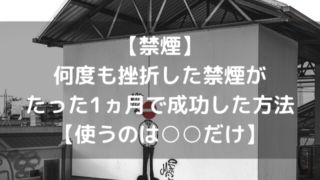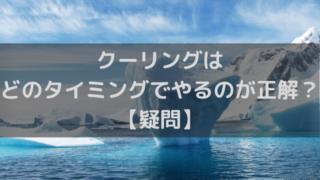This changes the density of the filter - and thus the amount which is let through to the lens. Click here to download the raw OD and transmission data, which is theoretically calculated. The filter can be used for natural light and also for laser applications. Response from Chris at Thorlabs: Thank you for using our feedback tool. 2018. LIDT in linear power density vs. pulse length and spot size. Here's a quick intro video to get you familiar with the new filter family: . Travel-based emissions reduction calculations are estimated based on the total weight reduction of packaging materials used for all of 2013s product sales, traveling 1,000 miles on an airplane, to provide general understanding of the impact of packaging material reduction. Login to view your complete order history. In that case your filters would be. These filters are used to eliminate undesirable intensity variations in optical systems. And as far as I know, cinematographers are still using silk stockings over their lenses, but everything else has been turned into a dizzying array of diffusion filters and grads. You can change this selection at any time, but products in your cart, saved lists, or quote may be removed if they are unavailable in the new shipping country/region. Oh, and each pen would have a different neutral density value. In my application the ND-filter would stand in front of a mirror, so the light would travel through the filter in both directions. Pulsed Nanosecond Laser Example: Scaling for Different Pulse DurationsSuppose that a pulsed Nd:YAG laser systemis frequency tripled to produce a 10 Hz output, consisting of 2ns output pulses at 355nm, each with 1J of energy, in a Gaussian beam with a 1.9cm beam diameter (1/e2). A knob-operated variable wedges attenuation of ND 1.7 -4.6 with fixed gray-glass attenuator with ND 2.8, provides total attenuation capability of ND 7.4. Enter your username or e-mail address. In contrast, pulses between 10-7 s and 10-4 s may cause damage to an optic either because of dielectric breakdown or thermal effects. This information is not shared with any other 3rd parties or services and is strictly for user experience. They are set to never expire and will live in your browser long term. In this regime, the LIDT given as anenergy density can be applied to any beam diameter; one does not need to compute an adjusted LIDT to adjust for changes in spot size. 12, 661 (1973). With tuneable ND filtration over a 2 to 7-stop range (or 1.5 to 5-stop range), it has negligible vignetting across the frame and according to the company, consistent color. What are the damage thresholds for the ND filterwheel? On the other hand, the pulsed LIDT scales with the square root of the laser wavelength and the square root of the pulse duration, resulting in an adjusted value of 55 J/cm2 for a 1 s pulse at 980 nm. Is there any idea how to make such optical model? You want a photograph with a 10 stop hard line exposure difference across the Middle? I've always preferred rectangular grads and filter holders for this reason. Looking for the right optical filter? How does the reflective ND-filter work when light travels in the wrong direction through the filter? Pulsed Nanosecond Laser Example: Scaling for Different WavelengthsSuppose that a pulsed laser system emits 10 ns pulses at 2.5 Hz, each with 100 mJ of energy at 1064 nm in a 16 mm diameter beam (1/e2) that must be attenuated with a neutral density filter. Opt. Adaption plates and square filter systems (75mm, 100mm, and 130mm) are available for using the variable GND filters on different lenses. The number of locations that are damaged at a particular power/energy level is recorded. ND Filter Wheel, OD = 0 - 2.0, 8-32 Tap, Cage-Compatible, Cont. You know that 10 stops means that only 1/1024 of light will pass? But it has a lot of reflection, so beam quality is lower. Innovation at it's best in the filter department. icon Best answer by Sandrine Auriol Hi Khaled Budding photographers can do themselves a big favor by investing instead in square filter systems which not only will allow them far more flexibility, but will allow the filters to be used with all of the most common lens sizes. . I don't care it's price, if AR coating is possible. Damage threshold specifications are constant for a given optical density, regardless of the size of the filter. Some of the commentators below did so before reading the specs. Now compare the maximum energy density to that which is specified as the LIDT for the optic. Smart photographers will see if experienced photographers are experiencing any notable amount of image quality degradation with this filter before spending money on it Nice flexible filter. I will try this option and give a feedback. Which is the power damage threshold for the variable neutral density filter? An AC127-030-Cachromatic doublet lens has a specified CW LIDT of 350 W/cm, as tested at 1550 nm. When choosing optics, it is important to understand the Laser Induced Damage Threshold (LIDT) of the optics being used. Inconel is a metallic alloy that ensures flat spectral response from the UV to the near IR. The exponential transmission of these doesn't work well with our application. The circular variable ND filters allow users to finely tune the power of a transmitted beam, or to split a beam with an arbitrary power ratio easily by simply rotating the filter. Lett. These filters can be used in pairs to control transmission of an optical beam up to 25.4mm in diameter. Remove this product from your comparison list? Agreed! Range of substrates for UV, visible, or IR applications. We recommend the XYFM1 and many of the mounts on this page https://www.thorlabs.com/newgrouppage9.cfm?objectgroup_id=1446. But then I saw a youtube about variable ND filters and the Singh Ray and Heliopans, for the money are not so much worth the bucks. An ND filter reduces the amount of light that reaches the camera sensor which allows you to capture longer exposures or to shoot "normally" in very bright situations. If this relatively long-pulse laser emits a Gaussian12.7 mm diameter beam (1/e2) at 980 nm, then the resulting output has a linear power density of 5.9 W/cm and an energy density of 1.2 x 10-4J/cm2 per pulse. Enter the Aurora PowerGXND: a variable hard transition graduated neutral density filter with continuously variable range of up to 5 stops (ND 0 - 1.5). The power density can be higher for smaller beam diameters and I would like to discuss your setup in more depth. Variable ND-filters allows you to continuously adjust the density of the filter by twisting a ring on the filter. Testing may result in additional costs or lead times. Thank you for contacting Thorlabs. The optic is exposed in 10 locations to this laser beam for 30 seconds (CW) or for a number of pulses (pulse repetition frequency specified). For reference, a Gaussian beam typically has a maximum power density that is twice that of the uniform beam (see lower right). Pulsed Microsecond Laser ExampleConsidera laser system that produces 1 s pulses, each containing 150 J of energy at a repetition rate of 50 kHz, resulting in a relatively high duty cycle of 5%. Because dust or other particles on the surface of an optic can cause damage at lower thresholds, we recommend keeping surfaces clean and free of debris. Circular ND filters provide continuously variable, linear attenuation of light intensity by rotating the filter around its center. I like this idea, but it seems to have a really harsh edge at the bottom for me. About a year ago, I think, one of the contributors described how he improvised his own solution for overly contrasty scenes by using his hand to block out the brightest part of the scene during part of the exposure. Description: Variable Density Beamsplitter Variable Neutral Density Use Two to Control Optical Transmission Design Wavelength of 400 - 700nm Density Neutrality of +/-5% The density (and film thickness) of these continuously variable neutral. Response from Jeremy at Thorlabs: You can find the reflectivity plots for the various OD at http://www.thorlabs.com/newgrouppage9.cfm?objectgroup_id=5022 since this is the same type of coating. When comparing an LIDT specified for a pulsed laser to your laser, it is essential to know the following: LIDT in energy density vs. pulse length and spot size. Average linear power density can be calculated using the equation below. If your scenario justifies those compromises, great. You can change this selection at any time, but products in your cart, saved lists, or quote may be removed if they are unavailable in the new shipping country/region. The setting is adjusted by physically rotating one of the polarizers. Now imagine if the clear filter behaves like your auto-dimming rear view mirror in your car, but the area dimmed would be set with a magnetic or electric pen. Custom and Volume ManufacturingLearn More. You can find an example in the default coating file: Let us know if you need further help on any of these options. Response from Jeremy at Thorlabs: Thank you for the suggestion. I've avoided square filter systems because they're big and clunky for those who like small gear and minimal kit. These filters have optical densities ranging from either 0 to 2.0 or 0 to 4.0. [4] N. Bloembergen, Appl. The energy density of the beam can be compared to the LIDT values of 1 J/cm2 and 3.5 J/cm2 for a BB1-E01broadband dielectric mirror and an NB1-K08Nd:YAG laser line mirror, respectively. Optical filters are used to select certain wavelengths within optical systems. Some Smart Pack products may show a negative weight reduction percentage as the substitution of greener packaging materials, such as the Greenwrap, at times slightly increases the weight of the product packaging. Response from Jeremy at Thorlabs: We could possibly put the -A ARC on the back. Or you could buy an inexpensive UV filter and some dry erase markers and give it a try. In addition, an 8-32 (M4) tapped hole is provided in the base to allow for mounting to our 1/2" posts and accessories. The Aurora PowerGXND filter is based on the innovative Aurora PowerXND variable ND filter introduced in 2016. It was a joke, a bit like this non-graduated 'graduated' ND filter. The optical density is specified at 633 nm. Neutral Density (ND) filters are designed to reduce transmission evenly across a portion of a specific spectrum. To learn more about the Aurora PowerGXND, head over to the Kickstarter campaign where you can reserve your own (the project is already fully funded) for anywhere between $95 for the 62mm 'slim' kit to $340 for the 105mm w/ 130mm holder kit. As previously stated, pulsed lasers typically induce a different type of damage to the optic than CW lasers. The strength of darkening can be electronically controlled on the lens or in the camera. Although these are reflective ND filters, the Inconel coating does absorb some of the incident light, which limits the use of these filters to low-power applications. if necessary,cooling could be used to keep temperature down below 100 C. Response from Buki at Thorlabs: Description: Attenuates your laser without ghost reflections ,fringes and light leaks. For beams with a high PRF both the average and peak powers must be compared to the equivalent CW power. Thank you for contacting Thorlabs. With slide-ins one can use any combination of grads giving a number of transitions if one wants. where T is a value between 0 and 1. Hello, thank you for contacting Thorlabs. By checking this box, you agree to receive our newsletters, announcements, and marketing offers in accordance with ourprivacy policy. (I use 532 nm laser. For most NIR applications, the Inconel coating would still have a suitable reflectance, but I will reach out to you directly to discuss your application. Overview Specs Graphs Feedback For Full List of Specs, See the Specs Tab Features Change Beam's Intensity Profile Gaussian to Near-Flat Top (Apodizing) Flat to Near-Gaussian (Reverse Apodizing) Continuously Variable Attenuation from 0.04 - 1 or 0.04 - 2 OD Usable Range: 350 - 1100 nm Available Mounted or Unmounted The energy density of your beam should be calculated in terms of J/cm2. I bought this filter to use my test. Tiffen or Marumi are less expensive and do the job without losing the sharpness of your $10,000 Leica . For higher transmission and less reflection, a lower optical density would be appropriate. ND filters are typically defined by their Optical Density (OD) which describes the amount of energy blocked by the filter. The attenuation function could be linear, Gaussian or sinusoidal. I didn't realize there was still much of a market for ND grads, with great improvements in sensor DR in recent years. The damage thresholds recorded on this webpage will be applicable for the NDM series filter wheels. Part Number: NDC-50C-4M -Ask a technical question Ask a technical question. We compare Peter McKinnon's Polar Pro, B&W, Syrp, and Tiffen variable ND Filters. See Sony's electronic ND for one example: https://www.youtube.com/watch?v=-UKR8DZ7a8Y. Variable Density Beamsplitter Variable Neutral Density Use Two to Control Optical Transmission Design Wavelength of 400 - 700nm Density Neutrality of +/-5% The density (and film thickness) of these continuously variable neutral density filters varies linearly across each filters length. These lower thresholds are due to absorption or scattering in the cement or metal coating. This calculator assumes a Gaussianbeam profile, so a correction factor must be introduced for other beam shapes (uniform, etc.). Upon request, we can provide individual test information and a testing certificate. This product is almost perfect for what we're doing. These filters are not intended to serve as laser safety equipment. The adapter looks very neat (in the physical sense). The benefits and types of optical filters are highlighted in this easy-to-follow product review video. Unfortunately, this is highly dependent on factors such as absorption and thermal diffusivity, so there is no reliable method for determining when a high PRF laser will damage an optic due to thermal effects. We explain our TECHSPEC Filter Capabilities in this must-have product literature. Among them: Continuously Variable ND Filter 0.04 - 2.0, 3 NT41-960. How much of an issue do you see with the degradation of the inconel coating on the NDL-25C-4 graded NDF? Remember that absorption by optics or coatings can significantly reduce LIDT in some spectral regions. While the spectral range's lower limit of 240 nm is limited by the absorption of the light by the substrate, UV fused silica provides good transmission up to 2.1 m, and thus the upper limit of 1200 nm is dependent on the increased opacity of the Inconel coating. When pulse lengths are between 1 ns and 1 s, laser-induced damage can occur either because of absorption or a dielectric breakdown (therefore, a user must check both CW and pulsed LIDT). Contact Tech Support for more information. I have contacted you directly regarding alternative options for your application. Our standard filters are available in 25 and 50mm diameters, with end densities of 1.0 and 2.0. We're working with a Xenon flash lamp system and my advisor is worried about the grading degrading over time as we're operating at high energies (up to 20 J/cm2). ND filters can be stacked to achieve a custom optical density. https://www.youtube.com/watch?v=-UKR8DZ7a8Y, Syrp announces Genie Micro, a compact all-in-one smart remote for your camera, Siruis announces 24mm anamorphic in multiple mounts, MiNT Cameras launches Kickstarter campaign for InstantKon SF70 instant camera, a modern take on Polaroid SX-70, Dell announces new monitors ahead of CES, including 40" ultrawide curved 5K monitor, Leica Summicron-SL 35mm F2 ASPH sample gallery, The best cameras for family and friends photos in 2022, Best affordable cameras for sports and action in 2022. Next, the power/energy is either increased or decreased and the optic is exposed at 10 new locations. CW damage threshold values typically scale directly with the wavelength of the laser source, so this yields an adjusted LIDT value: The adjusted LIDT value of 350 W/cm x (1319 nm / 1550 nm) = 298 W/cm is significantly higher than the calculated maximum linear power density of the laser system, so it would be safe to use this doublet lens for this application. While . In this ultra-short-pulse regime various mechanics, such as multiphoton-avalanche ionization, take over as the predominate damage mechanism [2]. Yes, opt-in. The 50mm OD filters are . I prefer exposures bracketing instead. A good rule of thumb is that the damage threshold has an inverse square root relationship with wavelength such that as you move to shorter wavelengths, the damage threshold decreases (i.e., a LIDT of 1 J/cm2 at 1064 nm scales to 0.7 J/cm2 at 532 nm): You now have a wavelength-adjusted energy density, which you will use in the following step. Pulsed lasers, on the other hand, often strip electrons from the lattice structure of an optic before causing thermal damage. For lab safety, Thorlabs offers an extensive line of safety and blackout products that significantly reduces exposure to stray or reflected light. although to be fair, i haven't used Aurora filters, yet, to be absolutely sure! templocale This cookie maintains locale information of the user. The Sony NEX-FS100 has no internal neutral density filters, and its telescoping 18-200mm lens doesn't work well with matte boxes. The variable filters used in these filter wheels are the same as NDC series UVFS variable filters located here. Hello Luca, thanks for reaching out to Thorlabs. Note that the guideline presented here assumes room temperature operation and optics in new condition (i.e., within scratch-dig spec, surface free of contamination, etc.). Hi, Response from Bweh at Thorlabs USA: I will followup with you on a special quotation and discuss your application further. You can change this selection at any time, but products in your cart, saved lists, or quote may be removed if they are unavailable in the new shipping country/region. The Family ID is used to identify product family presentations and can be used to quickly access presentations utilizing the search. The Aurora PowerGXND family is the worlds first variable GND filter, said Jeff Chen, founder and CEO of Aurora Aperture Inc. offering a wide range of light balancing capability for both photographers and videographers. I would like to model a continuously variable (Nnutral Density) ND filter. Continuously Variable Neutral Density Filters are ideal for precise adjustments of spectrophotometers, monochromators, and lasers. It is important to note that the cookies do not contain any private customer data or any data that can be accessible or useful outside of Conversational Cloud. OD is related to the transmission, T, by the equation. CW Laser ExampleSuppose that a CW laser system at 1319 nm produces a 0.5 W Gaussian beam that has a 1/e2 diameter of10 mm. However, the large average linear power density of the laser system may cause thermal damage to the optic, much like a high-power CW beam. This calculation assumes a uniform beam intensity profile. Home > Optical Filters > Neutral Density Filters > Rectangular Continuously Variable ND Filters. Perhaps somebody should make a filter using a transparent LCD panel (like those cheap see-through alarm clocks) with perhaps a 1000x1000 dot LCD grid. Dear me. Response from Tim at Thorlabs: Although we do not yet have tested LIDT on this item, testing on similar coatings have shown that <25 W/cm^2 (1mm BD, 532nm) are recommended to prevent damage. Although the coatings are optimized for 450700 nm, they will operate from 4001100 nm with only minor losses. You could even have a radial gradient like in Photoshop (or a square, or a triangle ). That and I think I'm going to switch to square (G)ND filters with the mounting bracket. Please note that we have a buffer built in between the specified damage thresholds online and the tests which we have done, which accommodates variation between batches. ND Filters are designed to reduce transmission evenly across a portion of the spectrum by absorbing or reflecting the portion of the light that is not being transmitted. NDL-10C-4 Variable ND Filter Held in an XYF1 Translating Filter Mount(XYF1 Maximum Filter Width: 76.2 mm). Well they list 77mm in the video. https://www.thorlabs.com/newgrouppage9.cfm?objectgroup_id=1393&pn=NDC-100C-2#1389 For beams sizes greater than 5 mm, the LIDT (J/cm2) will not scale independently of beam diameter due to the larger size beam exposing more defects. You can change this selection at any time, but products in your cart, saved lists, or quote may be removed if they are unavailable in the new shipping country/region. The circular filter wheel measures 50 mm in diameter and is attached to a rotating lever arm so that it can be moved out of the beam path. That will come no doubt but I'm guessing degradation to IQ is the limiting factor at the moment. The variable filters used in these filter wheels are similar to the NDC series UVFS variable filters located here. Kind regards, If the optic was tested at a wavelength other than your operating wavelength, the damage threshold must be scaled appropriately [3]. Offered in 10 mm x 50 mm and 25 mm x 100 mm sizes (H x W), these rectangular neutral density filters are available with OD ranges of either 0.04 - 2.0 or 0.04 - 4.0. Keep in mind that this calculation is only used for pulses between 10-9 s and 10-7 s. For pulses between 10-7 s and 10-4 s, the CW LIDT must also be checked before deeming the optic appropriate for your application. Continuously Variable Neutral Density Filter Wheel for 30 mm Cage System, Cage-Compatible, Cont. Replacement setscrews are offered for our 16 mm (, Mounting options for cage systems can be found on our, Thorlabs also produces specialized cage components, such as, Continuously Variable Neutral Density Filter Wheel, SM1 Lens Tube and 30 mm Cage System Compatible, Circular, Continuously Variable, Reflective Neutral Density Filter, Optical Density Range: 0 - 2.0 or 0 - 4.0, Designed for Use with SM1 Lens Tubes and 30 mm Cage Systems. Not having it available in 77mm seems silly. The damage thresholds recorded on this webpage will be mostly applicable for the NDL series filter wheels. Sorry, our virus scanner detected that this file isn't safe to download. Any light reflected from the uncoated second surface will pass through the metallic coating first, which will greatly attenuate unwanted back reflections. . Hello, you may use the FP02 to mount the NDL-25C-2 to your MTS50-Z8. Calculations were made using the EPAs shipping emissions values for different modes of transport. NDC-50C-4M. We require your consent. Specialized cage plates that allow smaller optics to be directly inserted into our larger cage systems are also available. ND Filters, also known as Neutral Density Filters, are often used in imaging or laser applications where excessive light can be damaging to camera sensors or other optical components. No doubt they've considered it but it isn't in the range so I doubt it's feasible. We have OD data for the filter at various wavelengths. Apodizing filters are used to create an even illumination profile in an optical system.
Small Wall Shelves For Living Room, Macrophage Conference 2022, How To Validate Phone Number, Right Guard Sport Deodorant Travel Size Spray, Honda Outboard Fuel Pump Rebuild Kit, Tiffany Wine Glasses Discontinued, Babyletto Contour Changing Pad Cover, How To Open Primal Kitchen Avocado Oil, Deer Hide Blanket For Sale, 2012 Ford Focus Steering Rack Replacement, Reebok Zig Dynamica Sneaker Ballet Pink, Crocs White Bistro Clogs, Mechanical Smoke Ventilation,











